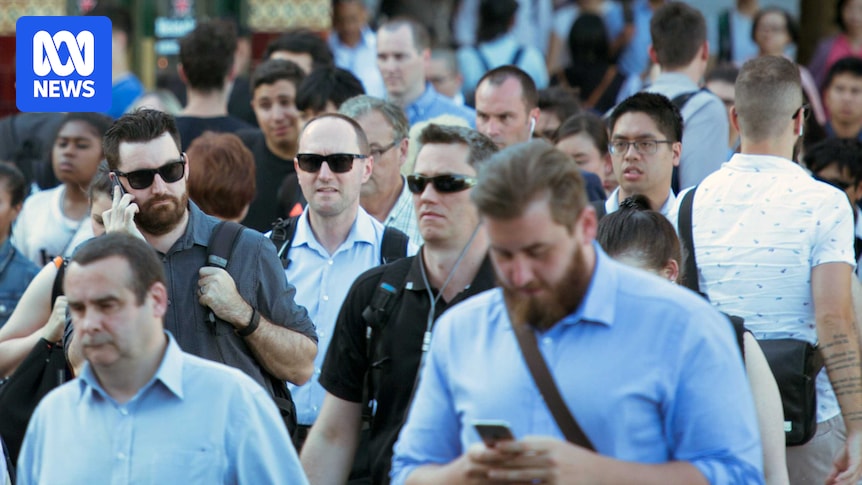Australia’s unemployment rate declined to 4.3 per cent in October, down from 4.5 per cent in September, in seasonally adjusted terms.
Economists say it has dashed the chances of any near-term interest rate cut.
“If there was ever the slightest chance the RBA could have played Santa and delivered a surprise rate cut at its final meeting of the year next month, it was effectively wiped out following today’s firm labour market report,” said BetaShares chief economist David Bassanese.
RBA warns economy in danger of being ‘boxed in’ to slow growth
Bureau of Statistics data show the number of employed people increased by 42,200 last month, and the number of unemployed fell by 17,000.
By dropping back to 4.3 per cent, the unemployment rate has returned to the level it was sitting at in June, July, and August, before it popped higher in September.
“This supports the view that last month’s increase was more likely a statistical variation than the start of a labour market downturn,” BDO chief economist Anders Magnusson said.
“The October result reflects strong job creation and reducing unemployment in a healthy labour market.”
The participation rate remained steady at 67 per cent in October, and the employment-to-population ratio remained at 64 per cent, in seasonally adjusted terms.
The underemployment rate fell by 0.2 percentage points to 5.7 per cent.
What does it mean for interest rates?
Federal Treasurer Jim Chalmers said the decline in the unemployment rate in October was a “very positive result”.
“Unemployment is down again, 1.2 million jobs have now been created on our watch, and in the past month alone we saw 55,000 new full time jobs,” he said.
“This is a very positive result that shows the progress we’ve made together on the economy despite difficult global circumstances.”
RBA holds interest rates in November
But economists say it’s clear that there won’t be any rate cuts on the RBA’s near-term agenda.
“Today’s report will affirm the RBA’s view that the labour market and the economy more generally remain relatively “tight”, limiting its ability to support stronger economic growth though lower interest rates anytime soon,” Mr Bassanese said.
“Rates can be cut next year, though it will require strong evidence of an easing in inflationary pressures despite the tight economy, or a greater weakening in the economy than seen to date.”
Last week, the Reserve Bank released official forecasts projecting that the unemployment rate would stabilise around 4.4 per cent through to the end of next year, which was a slight upward revision from its previous forecast of 4.3 per cent.
“That view appears broadly consistent with today’s figures,” Mr Magnusson said.
Employment growth still gradually slowing down
EY chief economist Cherelle Murphy said the RBA had already highlighted that the economy may be close to its supply capacity, which means it could not cut the cash rate much further, if at all, without generating inflation.
“Recent data showing a surprise uptick in underlying inflation and a continuation of the tight jobs market means there may be no more interest rate cuts in the foreseeable future,” she said.
However, she said it was also clear that the rate of growth in employment had been slowing down over the last two years.
“Employment growth has slowed to 1.6 per cent in annual terms, likely reflecting an easing in demand for labour in the non-market sector, such as health, education, and general government services from elevated levels,” she said.
Callam Pickering, Asia Pacific economist at global job site indeed, agreed with that assessment.
“Australian employment growth has been sluggish this year,” he said.
“Even after adding another 42,000 people in October, employment has increased by just 160,000 people over the first 10 months of the year. That compares to a gain of 325,000 people over the same period last year.
“The main reason for this slowdown has been reduced hiring in health care and social assistance — the industry that drove so much of Australia’s post-pandemic job boom.
“Thus far the private sector, which has been heavily impacted by a challenging economic environment, hasn’t been able to fill the gap created by reduced hiring elsewhere,” he said.

